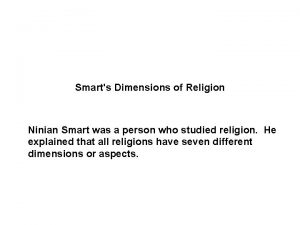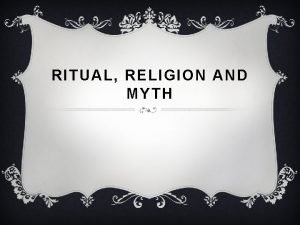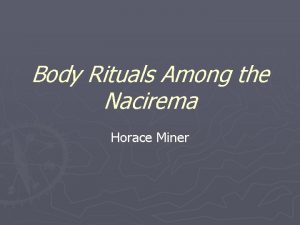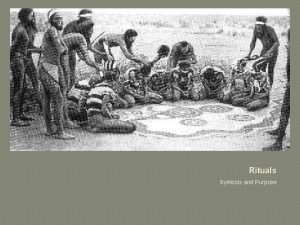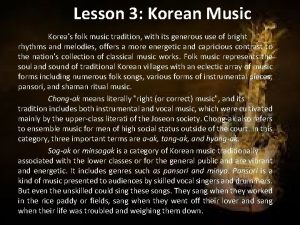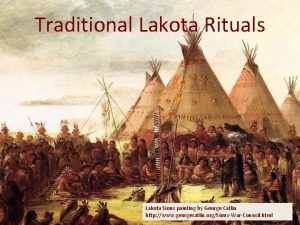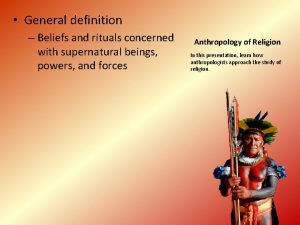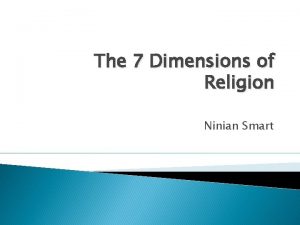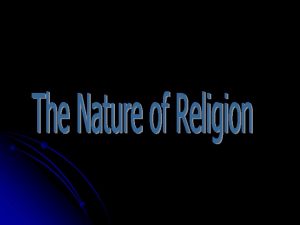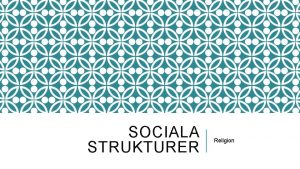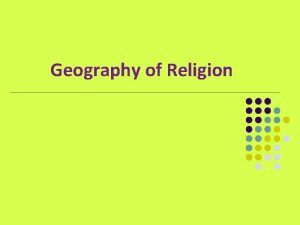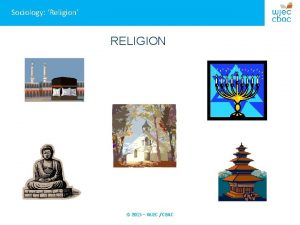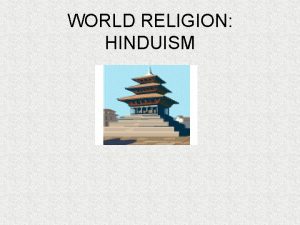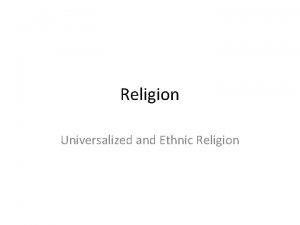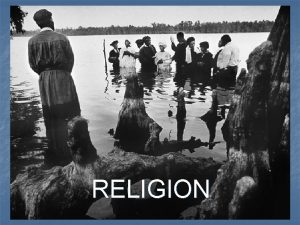The Characteristics of Religion Ninian Smart Content Rituals

















- Slides: 17

The Characteristics of Religion Ninian Smart

Content • Rituals • Stories • Beliefs and Values • Social Structures • Experiences • Ethics • Symbols

Rituals We see religion in its most honest form – religion in action. Whilst there are many types of religious rituals they all share: • A common structure, without which none of the participants could participate and it is the structure/ how it works which makes the ritual a meaningful experience. • Symbols play a huge part in making a ritual work for those involved, that is the meaning/s conveyed.

Distinguishing the various types of ritual. Rites of passage signifying movement from one stage to another e. g. Life or death; single to married life.

Rites of Communication Bring about communication between people and their gods, spirits or the ‘other’ world.

Rites of Demarcation Establish some space, person, animal or object as ‘holy’ e. g. consecration of ground as a burial site or blessing of a new church.

Rites of memorial Where special moments of the past are made present e. g. Passover or Easter

Rites of Cleansing Purify or restore people to an original state of innocence e. g. penitential rituals.

Stories It is the story or stories which lie behind each ritual that gives it its meaning. People who know and understand the story can participate to the fullest extent. Stories help people put their lives together:

Beliefs and Values Within the world of religion, people’s beliefs can normally be categorised under three headings: • gods and spirits (forces beyond the natural)

• beliefs about the world; (its origins and destiny); • beliefs about life (the meaning and purpose of life and the proper morality which should be attached to it).

Whilst conveyed in stories they are also often documented in creeds, catechisms, dogmas, doctrines and other such sacred texts.

Social structures There is sacred time and place of the past (when and where the event occurred) and in the present (as it is now celebrated or remembered).

Sacred people of the past, religious leaders or founders such as Buddha or Jesus Christ and those of the present, such as priests, Rabbis, Imams and the like.

Experiences Religious experiences occur when a person engages in a ritual, know the underlying, story, holds the underpinning beliefs, and is conscious of sacred time and space (both past and present).

Ethics This dimension of religion expresses the law that a tradition incorporates into its belief system An example taken from Buddhism would be the set of universally binding precepts knows as the five precepts or virtues.

Symbols The material or visible form of the social or institutional dimension of religion, usually expressed as buildings such as mosques, works of art such as icons, places such as Jerusalem.
 Experiential dimension of christianity
Experiential dimension of christianity Secneer
Secneer What is esp
What is esp Static content vs dynamic content
Static content vs dynamic content Traditional turkish wedding gifts
Traditional turkish wedding gifts Animatism vs animism
Animatism vs animism Type of rituals
Type of rituals Shrine box/chest definition
Shrine box/chest definition Pasteur and toldson
Pasteur and toldson Rituals symbols
Rituals symbols A prescriptive ritual that one that is:
A prescriptive ritual that one that is: Lutheranism beliefs
Lutheranism beliefs Folk songs religious works court music and shaman rituals
Folk songs religious works court music and shaman rituals Body dyagram
Body dyagram Rituals
Rituals Sioux rituals
Sioux rituals Religious rituals examples
Religious rituals examples Supernatural rituals
Supernatural rituals
